Themed collection The Role of Inorganic Materials in Renewable Energy Applications

The role of inorganic materials in renewable energy applications
Welcome to this themed issue of Dalton Transactions entitled: ‘The role of inorganic materials in renewable energy applications’.

Dalton Trans., 2017,46, 10528-10528
https://doi.org/10.1039/C7DT90128C
Development of non-oxide semiconductors as light harvesting materials in photocatalytic and photoelectrochemical water splitting
This perspective summarizes recent advances in the use of (oxy)nitrides and oxysulfides as light harvesting semiconductors for photocatalytic or photoelectrochemical water splitting.
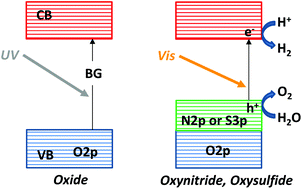
Dalton Trans., 2017,46, 10529-10544
https://doi.org/10.1039/C7DT00867H
Co-Doped Zn1−xCdxS nanocrystals from metal–organic framework precursors: porous microstructure and efficient photocatalytic hydrogen evolution
Nanoporous Co-doped Zn1−xCdxS fabricated with ZnCo-ZIFs as templates afford a high H2-production rate, corresponding to 45.2 and 422.2 times larger than those of Zn0.5Cd0.5S and CdS without using ZIF as template.
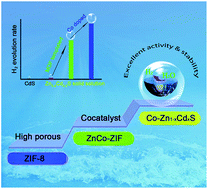
Dalton Trans., 2017,46, 10553-10557
https://doi.org/10.1039/C7DT01970J
Phase-controllable synthesis of cobalt hydroxide for electrocatalytic oxygen evolution
Identification of active sites for oxygen evolution reaction (OER) plays a key role in the design and fabrication of high-performance cobalt-based electrocatalysts.
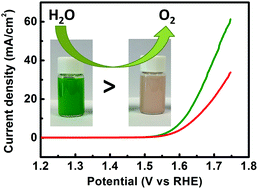
Dalton Trans., 2017,46, 10545-10548
https://doi.org/10.1039/C7DT01110E
A Ni2P modified Ti4+ doped Fe2O3 photoanode for efficient solar water oxidation by promoting hole injection
Nickel phosphide (Ni2P) was used as an excellent water oxidation cocatalyst for photoelectrochemical (PEC) water splitting, which could significantly promote the hole injection efficiency and suppress the back reaction of water oxidation over a Ti4+ doped Fe2O3 photoanode.
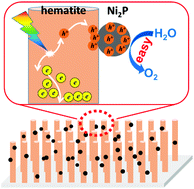
Dalton Trans., 2017,46, 10549-10552
https://doi.org/10.1039/C7DT00861A
Cold sprayed WO3 and TiO2 electrodes for photoelectrochemical water and methanol oxidation in renewable energy applications
Films prepared by cold spray have potential applications as photoanodes in electrochemical water splitting and waste water purification.

Dalton Trans., 2017,46, 12811-12823
https://doi.org/10.1039/C7DT02063E
Urea-glass preparation of titanium niobium nitrides and subsequent oxidation to photoactive titanium niobium oxynitrides
Titanium niobium oxynitrides (TiNbON) are an attractive category of potential photocatalysts, but strategies for preparing them remain limited.
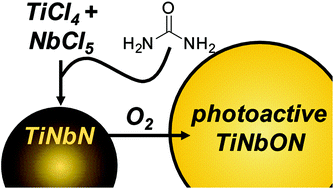
Dalton Trans., 2017,46, 12081-12087
https://doi.org/10.1039/C7DT03077K
Promoted photoelectrocatalytic hydrogen evolution of a type II structure via an Al2O3 recombination barrier layer deposited using atomic layer deposition
The introduction of an Al2O3 recombination barrier layer at the interface between TiO2 and CdSe can effectively improve the PEC hydrogen evolution performance.
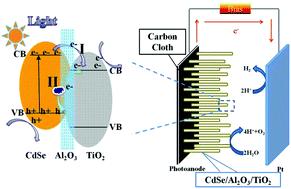
Dalton Trans., 2017,46, 10734-10741
https://doi.org/10.1039/C7DT00970D
Facile synthesis of porous La–Ti–O and LaTiO2N microspheres
Photocatalysts such as LaTiO2N offer an excellent opportunity to shift the global energy landscape from a fossil fuel-dependent paradigm to sustainable and carbon-neutral solar fuels.
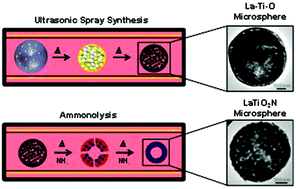
Dalton Trans., 2017,46, 10727-10733
https://doi.org/10.1039/C7DT01165B
Microwave-assisted deposition of a highly active cobalt catalyst on mesoporous silica for photochemical CO2 reduction
Uniform Co(III) sites were obtained on the silica surfaces. Thermal treatment under vacuum resulted in significant changes in the properties of the Co(III) sites.
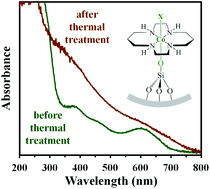
Dalton Trans., 2017,46, 10721-10726
https://doi.org/10.1039/C7DT01207A
Boron-doped graphitic carbon nitride nanosheets for enhanced visible light photocatalytic water splitting
A new type of boron-doped graphitic carbon nitride (B-g-C3N4) nanosheets was prepared by a benign one-pot thermal polycondensation process.
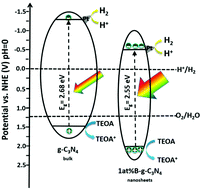
Dalton Trans., 2017,46, 10714-10720
https://doi.org/10.1039/C7DT00933J
Synthesis of BaTaO2N oxynitride from Ba-rich oxide precursor for construction of visible-light-driven Z-scheme overall water splitting
A novel synthesis of BaTaO2N photocatalyst with low defect density is introduced for promotion of overall water splitting performance.
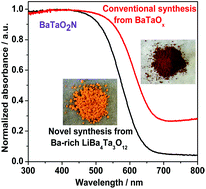
Dalton Trans., 2017,46, 10707-10713
https://doi.org/10.1039/C7DT00854F
LaTiO2N–LaCrO3: continuous solid solutions towards enhanced photocatalytic H2 evolution under visible-light irradiation
(LaTiO2N)1−x(LaCrO3)x continuous solid solutions were developed and showed enhanced photocatalytic H2-evolution activities under visible-light irradiation because of their narrowed bandgaps and increased lattice distortion.
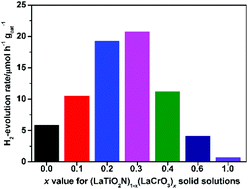
Dalton Trans., 2017,46, 10685-10693
https://doi.org/10.1039/C7DT01267E
Constructing three-dimensional porous Ni/Ni3S2 nano-interfaces for hydrogen evolution electrocatalysis under alkaline conditions
A facile, two-step synthetic approach was developed to produce a novel, three-dimensional porous Ni/Ni3S2 nanostructured catalyst. This unique structure can expose sufficient Ni/Ni3S2 interfaces to the electrolyte to obtain synergetic catalytic effects.
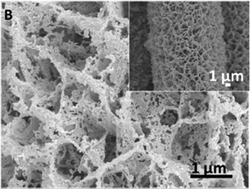
Dalton Trans., 2017,46, 10700-10706
https://doi.org/10.1039/C7DT00878C
The origin of enhanced photocatalytic activities of hydrogenated TiO2 nanoparticles
The photocatalytic activity of semiconductors is largely governed by their light absorption, separation of photoinduced charge carriers and surface catalytically active sites, which are primarily controlled by the morphology, crystalline size, structure, and especially the electronic structure of photocatalysts.
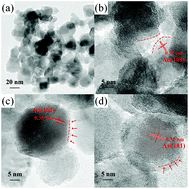
Dalton Trans., 2017,46, 10694-10699
https://doi.org/10.1039/C7DT00827A
One-step large-scale highly active g-C3N4 nanosheets for efficient sunlight-driven photocatalytic hydrogen production
The development of highly active, cost-effective, environmentally friendly and stable g-C3N4 based photocatalysts for H2 evolution is one of the most anticipated potential pathways for future hydrogen utilization.

Dalton Trans., 2017,46, 10678-10684
https://doi.org/10.1039/C7DT00849J
Ti-doped α-Fe2O3 nanorods with controllable morphology by carbon layer coating for enhanced photoelectrochemical water oxidation
Carbon layer coating can restrain the structural aggregation of α-Fe2O3 nanorods upon 800 °C sintering and improve their PEC performance for water oxidation.

Dalton Trans., 2017,46, 10558-10563
https://doi.org/10.1039/C7DT00850C
A small bandgap semiconductor, p-type MnV2O6, active for photocatalytic hydrogen and oxygen production
Visible-light active MnV2O6 with suitable band positions for both water oxidation and reduction.
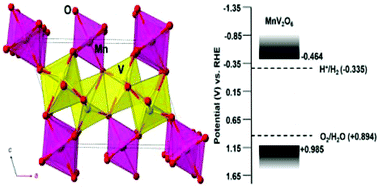
Dalton Trans., 2017,46, 10657-10664
https://doi.org/10.1039/C7DT00780A
A beta-Fe2O3 nanoparticle-assembled film for photoelectrochemical water splitting
Since Fe2O3 is a promising photoanode material for water splitting, it has attracted much attention, while other phases of ferric oxide are ignored. Here, β-Fe2O3 was used as a photoanode material for solar water splitting, and a solar photocurrent of ca. 0.12 mA cm2 at 1.6 VRHE was observed.
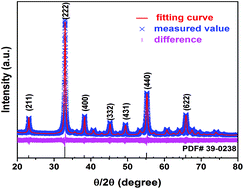
Dalton Trans., 2017,46, 10673-10677
https://doi.org/10.1039/C7DT00900C
Silver and palladium alloy nanoparticle catalysts: reductive coupling of nitrobenzene through light irradiation
Silver and palladium alloy nanoparticle catalysts for reductive coupling of nitrobenzene through light irradiation.
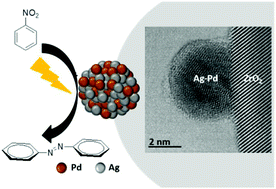
Dalton Trans., 2017,46, 10665-10672
https://doi.org/10.1039/C7DT00418D
Self-template synthesis of CdS/NiSx heterostructured nanohybrids for efficient photocatalytic hydrogen evolution
A heterostructured nanohybrid photocatalyst composed of ultrasmall CdS and NiSx nanoparticles has been prepared by a self-template synthetic strategy.
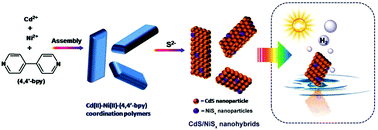
Dalton Trans., 2017,46, 10650-10656
https://doi.org/10.1039/C7DT00842B
Graphitic-C3N4 nanosheets: synergistic effects of hydrogenation and n/n junctions for enhanced photocatalytic activities
Synergistic effects of n/n junctions and hydrogenation have enhanced the optical, electronic and photocatalytic properties of graphitic C3N4 nanosheets.

Dalton Trans., 2017,46, 10641-10649
https://doi.org/10.1039/C7DT00761B
Hollow hematite single crystals deposited with ultra-thin Al2O3 by atom layer deposition for improved photoelectrochemical performance
Hollow and single crystal α-Fe2O3 was prepared by a hydrothermal method, which showed enhanced PEC performance on coating with ultra-thin Al2O3.
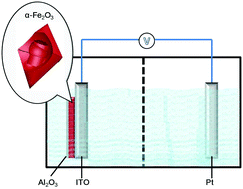
Dalton Trans., 2017,46, 10635-10640
https://doi.org/10.1039/C7DT00504K
Synthesis and photocatalytic H2 evolution properties of four titanium-oxo-clusters based on a cyclohex-3-ene-1-carboxylate ligand
This work reveals an interesting Ti–Cec system with various structures, where PTC-91 and PTC-94 have good photocatalytic activity and stability in water-splitting hydrogen evolution.

Dalton Trans., 2017,46, 10630-10634
https://doi.org/10.1039/C7DT00627F
Enhanced visible-light photocatalytic H2-generation activity of carbon/g-C3N4 nanocomposites prepared by two-step thermal treatment
Brown carbon/g-C3N4 nanocomposites synthesized by two-step calcination exhibited a wide visible light response range and improved photocatalytic H2-generation performance.
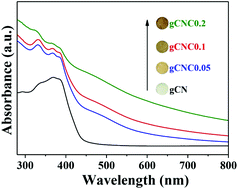
Dalton Trans., 2017,46, 10611-10619
https://doi.org/10.1039/C7DT00629B
Synthesis of layer-like Ni(OH)2 decorated ZnIn2S4 sub-microspheres with enhanced visible-light photocatalytic hydrogen production activity
Novel layer-like Ni(OH)2 co-catalyst-decorated ZnIn2S4 microsphere photocatalysts were synthesized for the first time via a facile in situ deposition method to boost the photocatalytic H2-production performance.
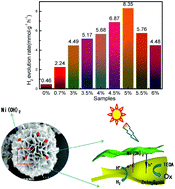
Dalton Trans., 2017,46, 10620-10629
https://doi.org/10.1039/C7DT00819H
Iron–cobalt bimetal oxide nanorods as efficient and robust water oxidation catalysts
Iron–cobalt bimetal oxide nanorods (Fe1.1Co1.9O4) can efficiently catalyze water oxidation under the reaction conditions of photocatalytic and electrochemical. This superior photocatalytic performance owes to the best balanced flat-band potential of Fe1.1Co1.9O4.
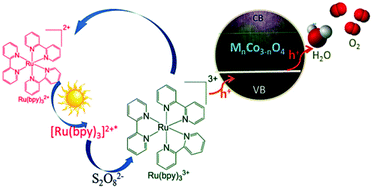
Dalton Trans., 2017,46, 10602-10610
https://doi.org/10.1039/C7DT00302A
Synthesis and photocatalytic activity of K2CaNaNb3O10, a new Ruddlesden–Popper phase layered perovskite
The photocatalytic performance of a new layered perovskite K2CaNaNb3O10 of the Ruddlesden–Popper phase was compared to Dion–Jacobson type KCa2Nb3O10.
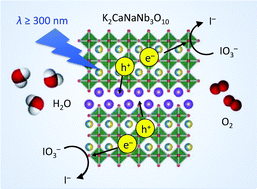
Dalton Trans., 2017,46, 10594-10601
https://doi.org/10.1039/C6DT04872B
Controlled synthesis of Bi25FeO40 with different morphologies: growth mechanism and enhanced photo-Fenton catalytic properties
Bi25FeO40 microtetrahedra, microcubes and microspheres were synthesized via a simple hydrothermal method and the microcubes showed enhanced photo-Fenton catalytic activity.

Dalton Trans., 2017,46, 10586-10593
https://doi.org/10.1039/C6DT04864A
Synthesis of novel CoOx decorated CeO2 hollow structures with an enhanced photocatalytic water oxidation performance under visible light irradiation
Cobalt oxide decorated octahedral ceria hollow structures (CoOx/CeO2) with various contents of CoOx nanoparticles were prepared via a simple chemical impregnation method.
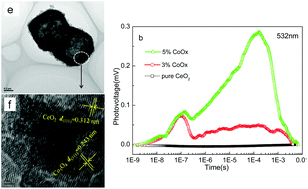
Dalton Trans., 2017,46, 10578-10585
https://doi.org/10.1039/C6DT04682G
Copper nanoparticle interspersed MoS2 nanoflowers with enhanced efficiency for CO2 electrochemical reduction to fuel
Electrocatalytic conversion of carbon dioxide (CO2) has been considered as an ideal method to simultaneously solve the energy crisis and environmental issue around the world.
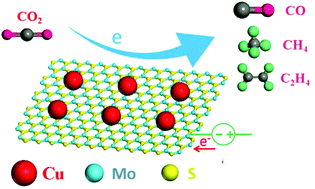
Dalton Trans., 2017,46, 10569-10577
https://doi.org/10.1039/C6DT04381J
Robust, double-shelled ZnGa2O4 hollow spheres for photocatalytic reduction of CO2 to methane
Robust, double-shelled ZnGa2O4 hollow spheres were fabricated for photocatalytic reduction of CO2 to methane.
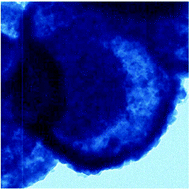
Dalton Trans., 2017,46, 10564-10568
https://doi.org/10.1039/C6DT04668A
About this collection
The need for clean, renewable sources of energy is one of the most pressing challenges facing society today. This issue highlights the ways in which inorganic materials are being developed and studied to tackle this problem, focusing on their utility in water splitting, CO2 reduction, and H2 storage, among other applications. The papers cover all aspects of the study of these materials, including synthetic approaches, control of morphology and phase, templating strategies and catalytic performance.